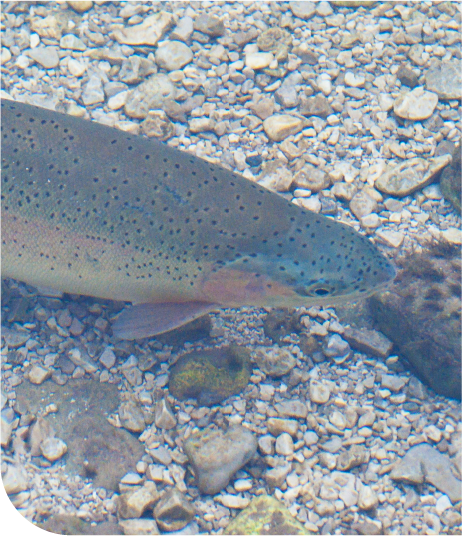HABITAT CONSERVATION PLAN
United Water Conservation District is in the process of developing a multiple species habitat conservation plan (MSHCP or HCP) for its current and future operations at the Freeman Diversion facility and nearby recharge basins (See available public documents relating to the HCP, June 30th 2020). United anticipates that the updates MSHCP will be completed and available in early 2024.
United is preparing the HCP as part of its application package to the National Marine Fisheries Service (NMFS), U.S. Fish and Wildlife Service (USFWS), and California Department of Fish and Wildlife (CDFW) for incidental take permits (ITP) under section 10(a)(1)(B) of the federal Endangered Species Act (ESA) and the California Endangered Species Act (CESA).
United’s operations and maintenance activities at the Freeman Diversion facility have the potential to affect the federally endangered southern California steelhead and other species that are or could become listed in the future under ESA and CESA.
United’s goal is to implement modification facilities and operations under an approved HCP to ensure compliance with ESA and CESA while still ensuring sufficient water remains available to manage groundwater aquifers.
Only a subset of United’s activities is proposed to be covered under the HCP and ITP. These activities are the operations and maintenance of Freeman Diversion facility and nearby recharge basins.
For activities not proposed for inclusion in the HCP, United has determined that either they will not affect any federally or state protected species or compliance with ESA and CESA is handled through other means (e.g., Section 7 consultation pursuant to ESA for activities permitted by a federal agency). United has identified 8 species for proposed coverage in the CP and HTP.
Lake Piru Deer
GENERAL HCP INFORMATION
Working closely with NMFS, USFWS, and CDFW, United is developing conservation measures that will minimize and mitigate the effects of United’s operations and maintenance activities at the Freeman Diversion and nearby recharge basins on the 8 species covered in the HCP. To qualify for an ITP, an HCP must contain conservation measures that minimize and mitigate the effects of the covered activities on the covered species to the maximum extent practicable.
The conservation measures that United is proposing include constructing and operating a new fish passage facility and modified water diversions. When completed and approved, United’s HCP and associated ITP will allow United to carry out its lawful activities while becoming a partner in conserving numerous species. United is seeking long term approval for its ITP (i.e., 50 years), providing the District and other local stakeholders with a measure of certainty about the requirements placed upon them.
Species Proposed for Coverage Under the Habitat Conservation Plan |
|||
| SPECIES | FEDERAL STATUS | STATE STATUS | Critical habitat present in the MSHCP Area* |
| Southern California steelhead (Oncorhynchus mykiss) |
E | SSC | Yes |
| Tidewater goby (Eucyclogobius newberryi) |
E | SSC | Yes |
| Least Bell’s vireo (Vireo bellii pusillus) |
E | E | No (designated critical habitat on the Santa Clara River falls outside MSHCP area) |
| Southwestern willow flycatcher (Empidonax traillii extimus) |
E | E | Yes |
| Pacific lamprey (Entosphenus tridentatus) |
None | None | No |
| Western pond turtle (Emys marmorata) |
Under Review | SSC | No |
| Two-striped garter snake (Thamnophis hammondii) |
None | SSC | No |
| Western yellow-billed cuckoo (Coccyzus americanus occidentalis) |
T | E | No |
| E = endangered, T = threatened, SSC = California Species of Special Concern, FP = Fully Protected
*Critical habitat for a threatened or endangered species, as designated by NMFS or USFWS under section 4 of the ESA, is or is not present in the MSHCP covered area |
|||

The HCP process provides several mechanisms for the public to be involved. United has held multiple public information meetings and will hold additional meetings as the process progresses. Completing the HCP process is a priority for United with the hope of obtaining an ITP in a timeframe that allows United to begin construction on the new fish passage facility.
For further information, please contact Principal Environmental Scientist Randall McInvale.
HCP ASSOCIATED DOCUMENTS
Lake Piru

